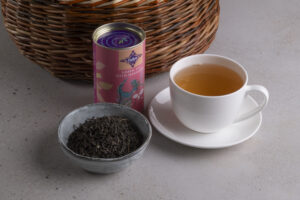Your basket is currently empty!
Historic Tea Rooms
This post is the first in our series on where you can drink good tea in historic tearooms with unforgettable surroundings.
Willow Tea Rooms, Glasgow

These historic tearooms were designed by Charles Rennie Mackintosh. The Cranston family were great supporters of him. Stuart Cranston, a tea merchant, opened a tearoom which proved a great success. This inspired other tearooms throughout the city. His sister Catherine then opened four of her own tea rooms. 215–217 Sauchiehall St opening in 1903. Charles Rennie Machintosh was employed at all these locations but here he had the freedom to design both inside and out.
After several changes of use and restoration by The Willows Tearooms Trust in 2014, they were re-opened in 2018 as Machintosh at the Willow. Here you may again enjoy lovely teas in beautiful surroundings. The fabric is now cared for by the National Trust for Scotland.
The tearoom is arranged over three floors and over the decades has been a popular meeting place for light meals, lunch and afternoon tea. The whole building has been carefully restored from the panelled hall to the staircase, fireplaces and floor coverings. Fittings have been replicated where necessary.
The Salon de Luxe, on the first floor, is the most famous room in the building. It protrudes from the facade giving striking views of Sauchiehall Street and having wonderful light. Inside, the walls feature distinctive glass panels in the upper parts and below, the walls are covered with purple silk adorned with glass beads. The original gesso panels by Dai and Jenny Vaughn ‘O Ye, All Ye Who Walk in Willowwood’ are now in the Kelvingrove Art Gallery and Museum and the ones in situ are faithfully re-created replicas. The name of the original is taken from the first line of Dante Gabriel Rossetti’s four ‘Willow-wood’ sonnets. The ‘Ladies Room’, as it was also called, has specially designed glass chandeliers and heavily leaded doors.
On the second floor is the panelled Billiard Room, a more masculine space for men. Its windows feature distinctive blue glass.
Attention to design at the tearoom extended to the waitresses’ uniforms which were brought from France and complemented with pearl necklaces. Catherine Cranston was known to be a fair and caring employer. The Willow Tea Rooms were frequented in 1911 by Suffrage organiser Kate Frye.
Machintosh at the Willow tearooms offer an extensive menu and, as you would expect, a good tea list.


